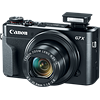Main
Model
Price
Advantages
launch
Announced
Body type
Camera subcategory
Sensor
Effective pixels
Max resolution
Sensor size
Sensor type
Processor
Image ratio w:h
Other resolutions
Sensor photo detectors
Image
ISO
Boosted ISO (maximum)
White balance presets
Custom white balance
Image stabilization
Uncompressed format
JPEG quality levels
Photography features
Minimum shutter speed
Maximum shutter speed
Aperture priority
Shutter priority
Manual exposure mode
Subject / scene modes
Built-in flash
Flash range
External flash
Flash modes
Continuous drive
Self-timer
Metering modes
Exposure compensation
AE Bracketing
Screen / viewfinder
Articulated LCD
Screen size
Screen dots
Touch screen
Screen type
Live view
Viewfinder type
Videography features
Resolutions
File Format
Videography notes
Microphone
Speaker
Optics & Focus
Focal length (equiv.)
Optical zoom
Maximum aperture
Autofocus
Digital zoom
Manual focus
Normal focus range
Macro focus range
Number of focus points
Physical
Weight (inc. batteries)
Dimensions
Environmentally sealed
Battery
Battery details
Battery Life (CIPA)
Storage
Storage types
Connectivity
USB
HDMI
Microphone port
Headphone port
Wireless
Wireless notes
Remote control
Other features
Orientation sensor
Timelapse recording
GPS
Samples
Videos
Summary
The PowerShot G7 X has better minimum (40 seconds) and fastest (1/2000 second) shutter speeds.
The PowerShot G7 X Mark II battery life is better than the PowerShot G7 X battery life. According to CIPA standards you will be able to make 265 shots with the PowerShot G7 X Mark II and only 210 with the PowerShot G7 X. The PowerShot G7 X weighs 304g which is 15g lighter in comparison with the weight of the Canon PowerShot G7 X Mark II.
The PowerShot G7 X Mark II and the PowerShot G7 X have an equal number of pros but as the PowerShot G7 X has which is a very important specification then it will be the best buy.


